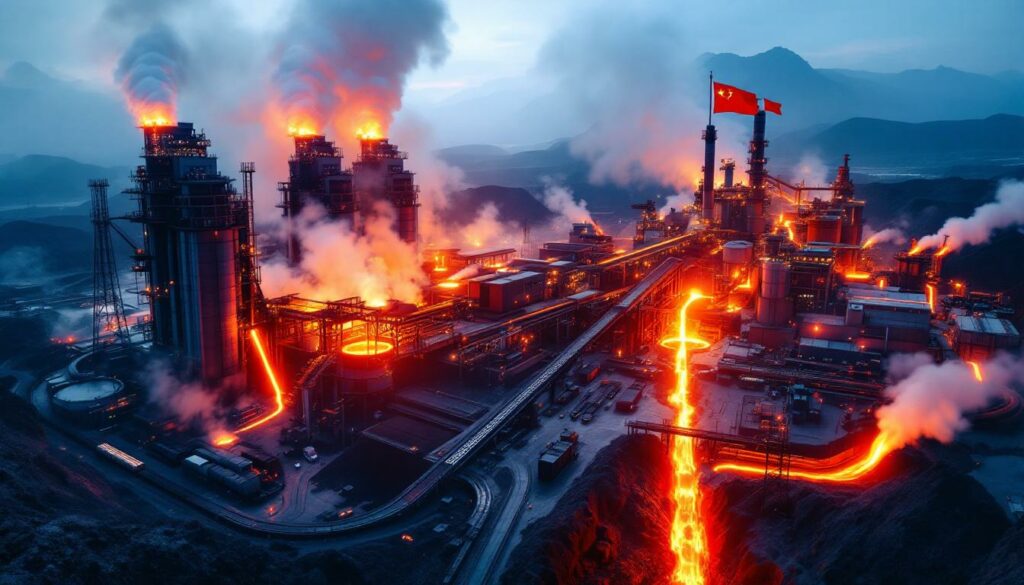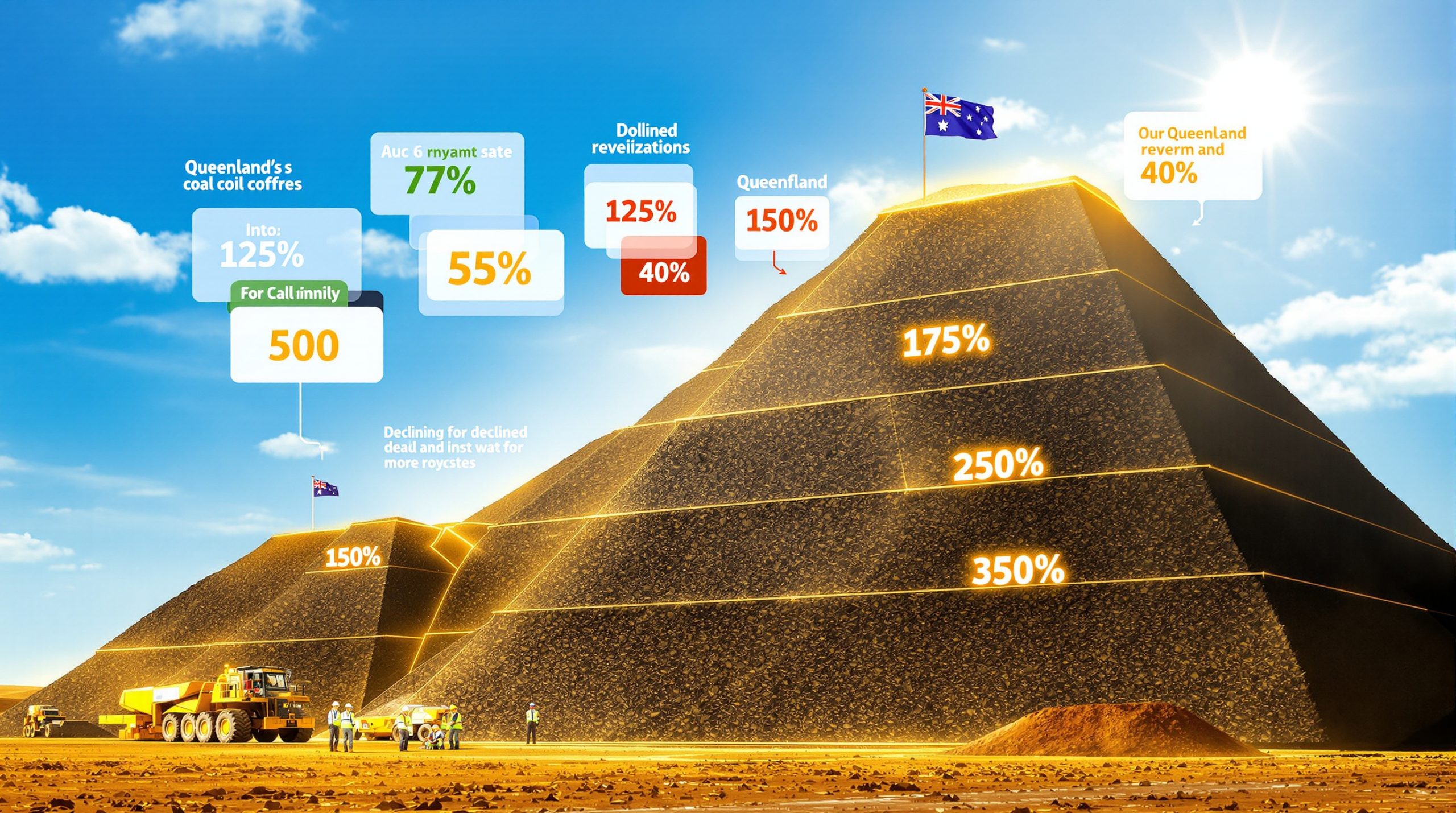What's Driving the Current Coke and Coal Market?
The coke and coal market in 2025 continues to demonstrate remarkable resilience despite numerous economic pressures. Industry analysts at Shanghai Metal Market (SMM) have identified several key factors maintaining market stability and supporting gradual price strengthening. Understanding these fundamentals provides critical insight for stakeholders across the metallurgical value chain.
Supply-Side Dynamics
Production stability represents one of the most significant factors in the current market landscape. According to SMM's July 2025 analysis, coking enterprises have maintained steady output levels despite facing increased production costs. This resilience stems from a careful balancing act:
- Acceptable loss margins remain within operational parameters, allowing continued production despite compressed profits
- Low inventory positions at key coking facilities create supply-side tension that supports price stability
- Efficient logistics chains are facilitating smooth shipment flows, preventing disruptive bottlenecks
- Mine reactivations across primary coal-producing regions have gradually improved coking coal availability
- Strategic production planning helps enterprises manage cost pressures while maintaining market presence
"Despite the challenging cost environment, coking enterprises have demonstrated remarkable operational discipline," notes SMM's latest industry briefing. "This has prevented the market disruptions that typically accompany margin compression periods."
The supply-side has been further stabilized by improved coal accessibility. Several previously idled mines have resumed operations in response to strengthening price signals, enhancing material flow through the value chain. This measured production response has prevented both shortages and oversupply scenarios.
Demand-Side Factors
While supply stability forms one pillar of market strength, demand resilience completes the supportive foundation. The downstream steel sector continues to demonstrate robust consumption patterns, creating consistent pull-through demand for metallurgical inputs. Key demand drivers include:
- Resilient finished steel product demand across construction, manufacturing, and infrastructure sectors
- Strong steel mill profitability creating financial capacity for sustained raw material purchasing
- High pig iron production rates maintaining consistent coke requirements
- Enhanced downstream purchase willingness amid positive market sentiment
- Futures market rallies strengthening overall confidence and purchasing activity
"The finished steel market shows resilient demand, coupled with favorable steel mill profitability… leading to enhanced purchase willingness for coke," according to SMM Analysis from July 10, 2025.
Perhaps most significantly, the high levels of pig iron output have created steady baseload demand for metallurgical coke. This technical production requirement means that as long as blast furnaces operate at current capacities, coke consumption remains largely inelastic regardless of price fluctuations within normal ranges.
The interconnected nature of steel production economics creates a positive feedback loop, where stable steel prices support mill profitability, enabling consistent raw material procurement, which in turn maintains predictable input costs and reinforces price stability throughout the value chain.
How Are Pricing Trends Evolving in the Market?
The coke and coal market has established a clear pricing pattern characterized by gradual strengthening with regional and quality-based variations. Price development reflects both technical fundamentals and strategic positioning by market participants across different product categories and processing methodologies.
Current Price Benchmarks
As of July 2025, metallurgical coke and coal prices have consolidated around several reference points that reflect processing methods, quality specifications, and regional dynamics:
| Product Category | Processing Method | National Average Price (¥/mt) |
|---|---|---|
| Prime Metallurgical Coke | Dry Quenching | 1,440 |
| Quasi-Prime Metallurgical Coke | Dry Quenching | 1,300 |
| Prime Metallurgical Coke | Wet Quenching | 1,120 |
| Quasi-Prime Metallurgical Coke | Wet Quenching | 1,030 |
The market also demonstrates notable regional price differentials:
- Linfen low-sulfur coking coal: ¥1,180/mt
- Tangshan low-sulfur coking coal: ¥1,200/mt, commanding a 1.7% premium
These benchmarks highlight several critical market characteristics, including:
- Processing premium: Dry quenching commands a substantial 14.3% premium over wet quenching for prime metallurgical coke
- Quality differential: Prime grades maintain a 8.7-10.8% premium over quasi-prime materials
- Regional variation: Northern production centers like Tangshan typically trade at premium levels compared to other regions
"The substantial price differential between processing methodologies reflects both the technical advantages of dry quenching and the increasing environmental compliance requirements facing the industry," explains SMM's market analysis team.
Price Movement Indicators
Several key indicators point to continued price strengthening in the short term:
- Coking coal price stabilization with demonstrated upward momentum
- Strengthening cost support throughout the supply chain
- Positive online auction results showing general price increases
- Anticipated coke price increase expected within the next week (mid-July 2025)
- Reduced inventory pressure supporting price stability
The pricing trend reflects a market approaching equilibrium after previous periods of volatility. Auction platforms have recorded consistent bid strengthening, indicating confidence among buyers even at incrementally higher price points.
Cost fundamentals have created a solid floor for prices, with the production economics now favoring modest but sustained price increases. This is particularly evident in the futures markets, where forward contracts have rallied in anticipation of physical market strengthening.
"Coking coal prices are stabilizing with upward momentum… strengthening cost support throughout the supply chain," according to SMM's July 2025 market assessment.
Inventory positions throughout the value chain have normalized, removing the downward price pressure that typically accompanies oversupply situations. With stocks at manageable levels, price discovery is increasingly focused on replacement cost rather than liquidation value.
What Are the Key Market Fundamentals to Watch?
Understanding the underlying market fundamentals provides essential context for anticipating future price movements and supply-demand dynamics in the coke and coal sector. Several critical factors warrant close monitoring by industry participants.
Supply-Demand Balance Analysis
The market has achieved a delicate equilibrium that supports price stability with modest strengthening potential. Key balance indicators include:
- Gradual coking coal supply improvement from reactivated mines, preventing shortage-driven price spikes
- Smooth coal mine shipments maintaining steady market flow without logistical disruptions
- Easing inventory pressure across the supply chain, normalizing stockholding costs
- Increased purchase willingness among downstream enterprises, reflecting confidence
- Low coke inventories at strategic production facilities, creating supply-side tension
This balanced state has emerged following earlier periods of inventory accumulation and subsequent drawdown. The current situation reflects what analysts describe as a "goldilocks" scenario—neither tight enough to trigger dramatic price increases nor loose enough to precipitate value collapse.
"The current market equilibrium reflects careful inventory management throughout the supply chain, with just-in-time procurement strategies replacing earlier stockpiling behaviors," notes SMM's analysis.
The production response has been measured, with miners demonstrating disciplined output increases that address demand without flooding the market. This controlled supply growth has been instrumental in maintaining orderly mining industry trends.
Cost Structure Examination
The cost fundamentals underlying the coke and coal market provide crucial insights into price sustainability and future movement potential:
- Rising production costs have expanded producer margins but remain sustainable
- Cost increases staying within operational parameters for continued production viability
- Raw material fundamentals providing stable foundation for pricing
- Cost support maintaining market stability with gradual strengthening bias
- Pricing power shifting incrementally toward producers as margins normalize
The cost structure analysis reveals that while producers have faced margin pressure, the current price points remain economically viable for continued operation. This prevents the supply disruptions that would typically accompany severe cost-price misalignment.
For metallurgical coke producers, the primary input cost—coking coal—has stabilized at levels that permit continued production despite compressed margins. This cost stability has helped prevent the disruptive production curtailments that have characterized previous market cycles.
The cost foundation appears sufficiently solid to support anticipated price increases without triggering demand destruction. This creates a favorable environment for measured price strengthening that aligns with underlying production economics.
How Is Market Sentiment Influencing Trading Behavior?
Market psychology plays a crucial role in the coke and coal sector, often driving trading patterns and positioning strategies beyond what pure fundamentals might suggest. The current sentiment landscape reveals important insights into likely market evolution.
Trader and Producer Outlook
The psychological framework guiding market participants has shifted toward cautious optimism, influencing position-taking and procurement strategies:
- Positive market sentiment bolstered by sustained futures rallies
- Enhanced downstream purchase willingness amid favorable conditions
- Expectations of near-term price increases influencing current positions
- Increased trader activity in anticipation of strengthening trends
- Growing producer confidence despite previous margin pressures
This sentiment shift represents a notable change from earlier periods characterized by hesitant procurement and defensive positioning. Market participants increasingly view the risk-reward balance as favoring proactive engagement rather than sideline observation.
"Expectations of near-term price increases are influencing current positions… traders are showing increased activity in anticipation of strengthening trends," reports SMM in their July 2025 market assessment.
The futures market has played a particularly significant role in sentiment formation, with sustained rallies providing confidence signals that translate into physical market activity. This creates a positive feedback loop where price expectations drive procurement behavior that subsequently validates those same expectations.
Strategic Positioning Opportunities
The current market environment presents specific strategic considerations for different participants across the value chain:
- Short-term coking coal prices expected to test marginal increases, favoring measured inventory building
- Coke market likely to maintain steady-to-strong operational trend supporting forward contracts
- Strategic inventory management becoming increasingly important for cost optimization
- Forward purchasing considerations amid anticipated price movements creating hedging opportunities
- Risk assessment requirements varying by market participant position and exposure
For producers, the strengthening price environment supports measured output increases without risking oversupply. The gradual nature of the anticipated price movement provides sufficient time for calibrated production responses.
Consumers face a different calculus, balancing the risk of higher future prices against inventory carrying costs. The expected price increase trajectory suggests that forward procurement strategies may yield cost advantages over spot purchasing in coming weeks.
Traders find themselves with enhanced arbitrage opportunities as regional and quality differentials widen. The varying price movement rates across product categories create potential profit pockets for market intermediaries with logistical flexibility.
What Regional Variations Exist in the Market?
The coke and coal market demonstrates significant geographic diversification, with regional factors creating price differentials and unique market dynamics across production centers. Understanding these variations provides valuable insight for supply chain optimization and strategic sourcing.
Geographic Price Differentials
Regional price variations reflect logistical realities, quality differences, and local supply-demand dynamics:
- Northern premium pricing evident in Tangshan (¥1,200/mt) vs. Linfen (¥1,180/mt) comparisons
- Transportation infrastructure efficiency affecting delivered cost structures
- Local demand intensity creating regional consumption hotspots
- Regional environmental regulations imposing varying compliance costs
- Historical production center advantages maintaining competitive positioning
The northern production premium remains a consistent market feature, with Tangshan maintaining its price leadership position. This 1.7% price advantage reflects both quality considerations and the region's proximity to major steel production centers.
"Regional price differentials reflect not just transportation costs but also quality consistency and reliability of supply—factors that command measurable premiums in procurement decisions," according to SMM's regional market analysis.
Transportation logistics continue to influence delivered cost variations, with rail capacity constraints occasionally creating temporary regional price disparities. These logistical considerations make geographic sourcing strategies an important component of cost management for large consumers.
Quality-Based Market Segmentation
Beyond geographic considerations, the market demonstrates clear quality-based segmentation that creates distinct price tiers:
- Significant price spread between dry and wet quenching processes (14.3% for prime grades)
- Premium pricing for higher quality metallurgical products (8.7-10.8% for prime vs. quasi-prime)
- Low-sulfur coal commanding market premium across all regions
- Quality differentiation becoming increasingly important for technical performance
- Processing method significantly impacting final product valuation
The quality differentiation reflects technical performance requirements in downstream applications, particularly in steel production. Higher-quality coke delivers improved blast furnace efficiency, reduced impurities, and lower overall production costs—benefits that justify premium pricing.
The processing methodology creates perhaps the most significant quality-based price differentiation. Dry quenching produces metallurgical coke with superior physical and chemical properties while offering environmental benefits through reduced emissions and water usage. These advantages translate directly into price premiums exceeding 14% compared to wet-quenched alternatives.
The increasingly stringent environmental regulations facing the steel industry have enhanced the value proposition of higher-quality, cleaner-burning metallurgical inputs. This regulatory pressure has widened quality-based price differentials beyond what technical performance alone might justify.
What's the Short-Term Market Outlook?
Industry analysts project a stable-to-strengthening market environment for coke and coal over the coming quarter, with specific developments likely to shape price trends and trading opportunities for market participants.
Near-Term Forecast (Q3 2025)
The market outlook for the third quarter of 2025 suggests continued stability with modest strengthening potential:
- Coke market expected to operate steadily with gradually strengthening price trend
- Anticipated coke price increase of one round within the next week (mid-July 2025)
- Coking coal prices likely to test marginal increases following stable consolidation
- Continued support from steel sector fundamentals maintaining baseload demand
- Maintained production levels with strategic inventory management optimizing positions
This outlook reflects the convergence of supply-side discipline, steady demand fundamentals, and supportive cost structures. The anticipated price increases are expected to be measured rather than dramatic, allowing for orderly market adjustment without significant demand destruction.
"Coke market expected to operate steadily with strengthening trend… supported by steel sector fundamentals," states SMM's July 2025 market forecast.
Production levels are projected to remain stable, with any output increases carefully calibrated to match demand growth. This production discipline should prevent the oversupply scenarios that have disrupted previous market cycles.
The price increase anticipated within the next week represents a test of market absorption capacity. If successfully implemented without demand pullback, it may establish a new price floor and potentially trigger subsequent increase rounds before quarter-end.
Key Indicators to Monitor
Several critical metrics warrant close monitoring as leading indicators for market direction:
- Steel mill profitability as the primary indicator for coke demand sustainability
- Pig iron production rates directly influencing consumption volumes
- Raw material inventory levels throughout the supply chain
- Futures market movements as sentiment and expectation indicators
- Mine production rates affecting supply availability and price pressure
Steel mill profitability remains perhaps the single most important indicator for coke market health. As long as steel producers maintain positive margins, their coke procurement activities typically continue unabated, providing consistent baseload demand.
Pig iron output serves as a direct volumetric indicator for coke consumption, with the technical requirements of blast furnace operation creating a relatively inelastic relationship between production targets and coke requirements. This connection makes steel production schedules a reliable predictor of coke demand.
Inventory positions throughout the value chain provide crucial insights into potential price pressures. The current normalized stock levels support price stability, but any significant inventory accumulation or depletion would likely trigger corresponding price movements.
The futures market merits particular attention as both a leading indicator and sentiment driver. Recent rallies have helped establish positive market psychology, and continued strength would likely translate into physical market confidence.
Frequently Asked Questions About Coke and Coal Market Trends
What factors are currently supporting coke prices?
The coke market benefits from multiple supportive elements creating a favorable pricing environment:
- Resilient steel demand maintaining steady consumption patterns
- Strong steel mill profitability enabling consistent procurement activities
- High pig iron production creating technical requirement for coke inputs
- Stable-to-rising coking coal prices enhancing cost support throughout the value chain
- Low coke inventories at key facilities creating supply-side tension
These factors combine to create a balanced market with modest strengthening bias. The technical requirements of steel production ensure baseload demand as long as blast furnaces operate at current capacities, while the cost fundamentals provide a price floor that prevents significant downside risk.
How are coking enterprises managing rising costs?
Coking enterprises have implemented several strategies to navigate the challenging cost environment while maintaining operational viability:
- Accepting compressed but manageable margins that remain within operational parameters
- Optimizing production efficiency to minimize per-unit costs
- Maintaining stable production to maximize economies of scale
- Leveraging smooth shipment flows to reduce logistical costs
- Strategic raw material procurement to optimize input costs
Despite facing expanded losses due to cost increases, coking enterprises have maintained production stability because these losses remain within acceptable operational ranges. The industry demonstrates remarkable discipline in balancing cost pressures against market opportunities, with expectations of price increases helping to offset margin compression.
What is the relationship between steel production and coke demand?
Steel production, particularly through the blast furnace route, creates direct and largely inelastic demand for metallurgical coke:
- Each ton of pig iron requires approximately 0.3-0.4 tons of metallurgical coke
- Blast furnace chemistry necessitates coke for both thermal and chemical reactions
- Steel production schedules directly drive coke procurement patterns
- Mill profitability determines purchasing power for raw materials
- Production method changes (e.
Want to Discover ASX Mining Opportunities Before the Market?
Gain an immediate market edge with Discovery Alert's proprietary Discovery IQ model, which instantly notifies you of significant ASX mineral discoveries as they happen. Explore how historic discoveries have generated substantial returns by visiting the Discovery Alert discoveries page and begin your 30-day free trial today.




